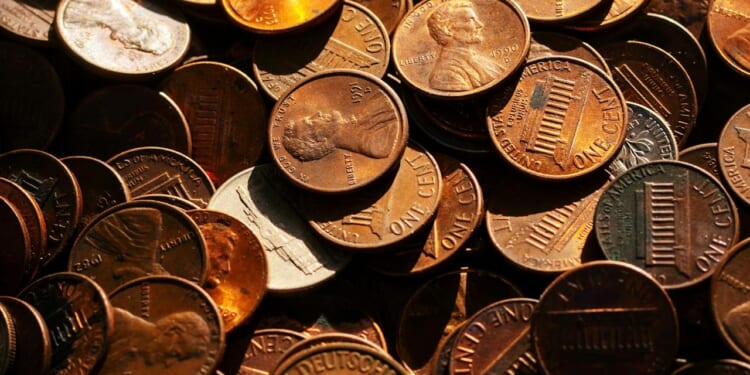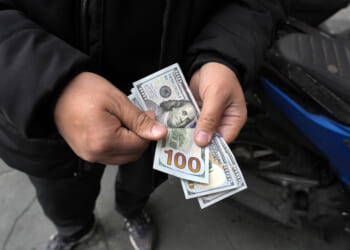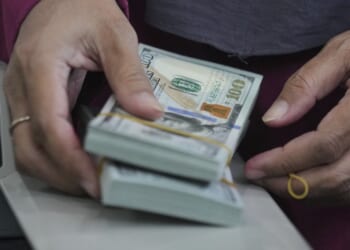In 2004, in The New York Times, William Safire let his poison pen burn like acid into the proud penny’s copper and zinc: “The time has come to abolish the outdated, almost worthless, bothersome, and wasteful penny.” Perhaps it was Safire’s last name that led him so long ago to disdain the paltry penny, which has now seen its very last U.S. minting (for now). Congrats, Bill, this is your hour.
That said, here are some arguments to encourage us Americans to guard our penny supply for centuries to come, to remind ourselves and our descendants of the simpler, less inflationary times of yesteryear. Some of these arguments are unfair, some are untrue, but all of them are good reasons, full of common sense, designed to help us pinch a little tighter our most democratic, widely used, highly cherished monetary unit, the now very unlucky penny.
First, a number of our lovely American women bear the name “Penny.” The removal of the penny from circulation turns that lovely name into an artifact of American history. Now, women like the name Penny for themselves because it sounds friendly, approachable, and unassuming. Pitching our little cent piece into the dustbin of history has now made the name sound old-fashioned as well. Women do not usually prefer that association with their name. So hold on to your pennies and keep that name ever new.
Second, the poor — who always come second, don’t they? — would lose an entire market segment of the panhandling industry: selfish children. Contrary to Walt Whitman and Steven Spielberg’s misbelief, children must learn generosity over time. In the first years of their money-carrying life, they are hard pressed to part with even a penny for beggars in the street. Without the penny in circulation, it is unlikely that children will part with — God forbid — a nickel. Millions of aggregate dollars will be lost to the poor, thereby hindering the trickle-down economic model from achieving its full potential. Safire’s luxurious triumph hurts the poor, the development of generosity in our young, and the basic economic theory of the late ’80s and early ’90s.
Third, the image of Abraham Lincoln, nobly depicted in profile on the American penny, will now fall into disuse if we do not press our pennies close to our hearts. The decreased contact with this great American president will have a terrible effect on the American people. They will be less likely to consider the lessons of the Civil War; they will cease contemplating our terrible internal struggle with slavery. A reduced fluency with Lincoln’s life and times would allow the cause of equality to dwindle in importance for many Americans and possibly lead to future civil wars, a return to racism, and less attention to the maintenance of the federal-state balance of power.
Fourth, an entire subset of magic tricks and time-passing games will be ruined.
Fifth, the abolition of the penny will mortally wound numerous legitimate industries: coin collection, penny roll manufacturers, Coinstar, shoe companies that make and sell penny loafers, and change purse makers. I, for one, refuse to say “nickel loafers.”
Sixth, Americans will see a dramatic drop in their luck, as fewer and fewer people find lucky pennies on the streets of our cities.
Seventh, the going rate for interpersonal communication will increase fivefold without the penny. People will talk less to each other, decreasing our sense of fellowship and national unity. Any economist will tell you that the opportunity cost of paying a penny for your thoughts is far more favorable than if the going rate were a nickel.
Finally, gas stations, supermarkets, hardware stores, and sales in thousands of retailers will attract fewer consumers to their products, thereby slowing the economy. Perhaps the luxurious Mr. Safire was immune to such seductions, but most of us can not deny the increased attraction of $2.99 a gallon over $3.00 a gallon. The one is reasonable; the other is the ravages of inflation.
It is clear, then, that the plucky penny has its uses. The penny’s detractors nickel and dime us to death with their arguments for efficiency over and against tradition. Ironically, they claim we fear change. Yet the penny remains the bedrock of our economic might as a nation. We must not submit our poor pennies to the railroad tracks of history, but instead, we must hold them tightly, for Mr. Safire, God rest his soul, and all who have discontinued the minting of the precious penny have no common cents.
Matthew Mehan is the Associate Dean and Associate Professor of Government for the Van Andel Graduate School of Government at Hillsdale College in D.C. on Capitol Hill. His latest book, “The American Book of Fables,” is due out next May, in time for America’s 250th Anniversary.















